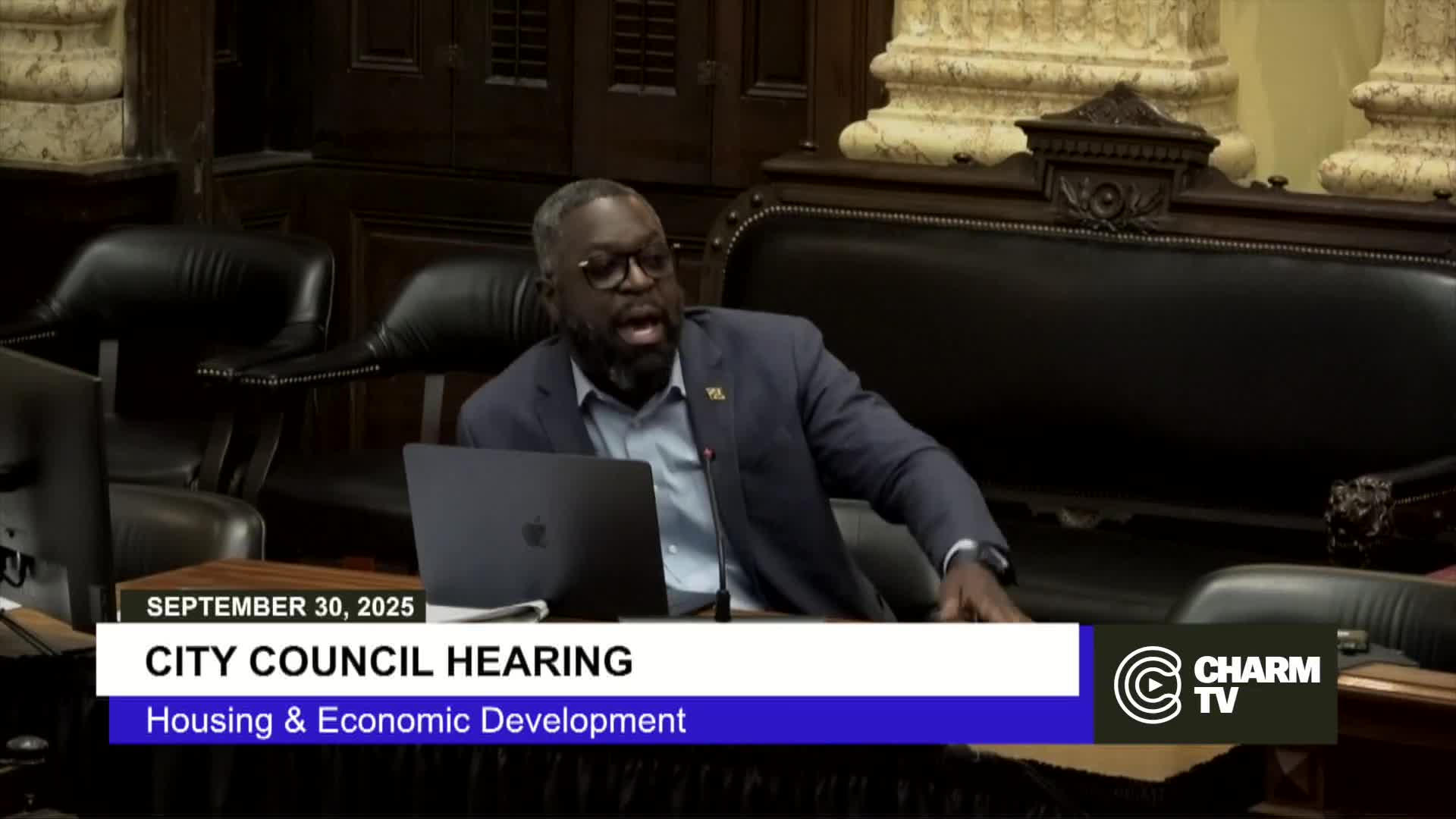Council Members Discuss Strategies to Reduce Baltimore's Vacant Building Notices
October 01, 2025 | Baltimore City, Baltimore County, Maryland
This article was created by AI summarizing key points discussed. AI makes mistakes, so for full details and context, please refer to the video of the full meeting. Please report any errors so we can fix them. Report an error »

During a recent City Council Hearing focused on housing and economic development, Baltimore officials discussed the ongoing challenges of vacant buildings and unoccupied retail spaces, which continue to impact neighborhoods across the city. Mayor Scott's administration has made strides in reducing vacant building notices, achieving the largest decrease since he took office. However, the process of addressing these issues remains complex and time-consuming.
City officials highlighted that there are only two primary ways to eliminate a vacant building notice: through demolition or by obtaining a use and occupancy permit. The latter often involves navigating legal hurdles related to property ownership, which can delay progress. Approximately 50% of receivership cases filed by the city have seen property owners take initiative to renovate their buildings, but many properties still face significant challenges.
Councilman Blanchard emphasized the urgency of addressing unoccupied retail spaces, noting that this issue resonates deeply with residents living near commercial corridors. He pointed out that vacant storefronts can detrimentally affect neighborhood perceptions and development. Blanchard and other council members expressed a need for more effective tools to tackle these challenges, indicating a collective interest in finding innovative solutions.
The discussions underscored the importance of a comprehensive approach to urban planning, with strategies tailored to specific neighborhoods. The city’s ongoing efforts, including the $3 billion strategy mentioned by Director Moxon, aim to not only acquire properties but also to facilitate their redevelopment.
As Baltimore continues to confront these pressing issues, the city council's commitment to addressing vacant buildings and revitalizing commercial areas reflects a broader goal of enhancing community well-being and economic vitality. The next steps will involve further collaboration among council members and community stakeholders to develop actionable solutions that can lead to tangible improvements in residents' daily lives.
City officials highlighted that there are only two primary ways to eliminate a vacant building notice: through demolition or by obtaining a use and occupancy permit. The latter often involves navigating legal hurdles related to property ownership, which can delay progress. Approximately 50% of receivership cases filed by the city have seen property owners take initiative to renovate their buildings, but many properties still face significant challenges.
Councilman Blanchard emphasized the urgency of addressing unoccupied retail spaces, noting that this issue resonates deeply with residents living near commercial corridors. He pointed out that vacant storefronts can detrimentally affect neighborhood perceptions and development. Blanchard and other council members expressed a need for more effective tools to tackle these challenges, indicating a collective interest in finding innovative solutions.
The discussions underscored the importance of a comprehensive approach to urban planning, with strategies tailored to specific neighborhoods. The city’s ongoing efforts, including the $3 billion strategy mentioned by Director Moxon, aim to not only acquire properties but also to facilitate their redevelopment.
As Baltimore continues to confront these pressing issues, the city council's commitment to addressing vacant buildings and revitalizing commercial areas reflects a broader goal of enhancing community well-being and economic vitality. The next steps will involve further collaboration among council members and community stakeholders to develop actionable solutions that can lead to tangible improvements in residents' daily lives.
View full meeting
This article is based on a recent meeting—watch the full video and explore the complete transcript for deeper insights into the discussion.
View full meeting
